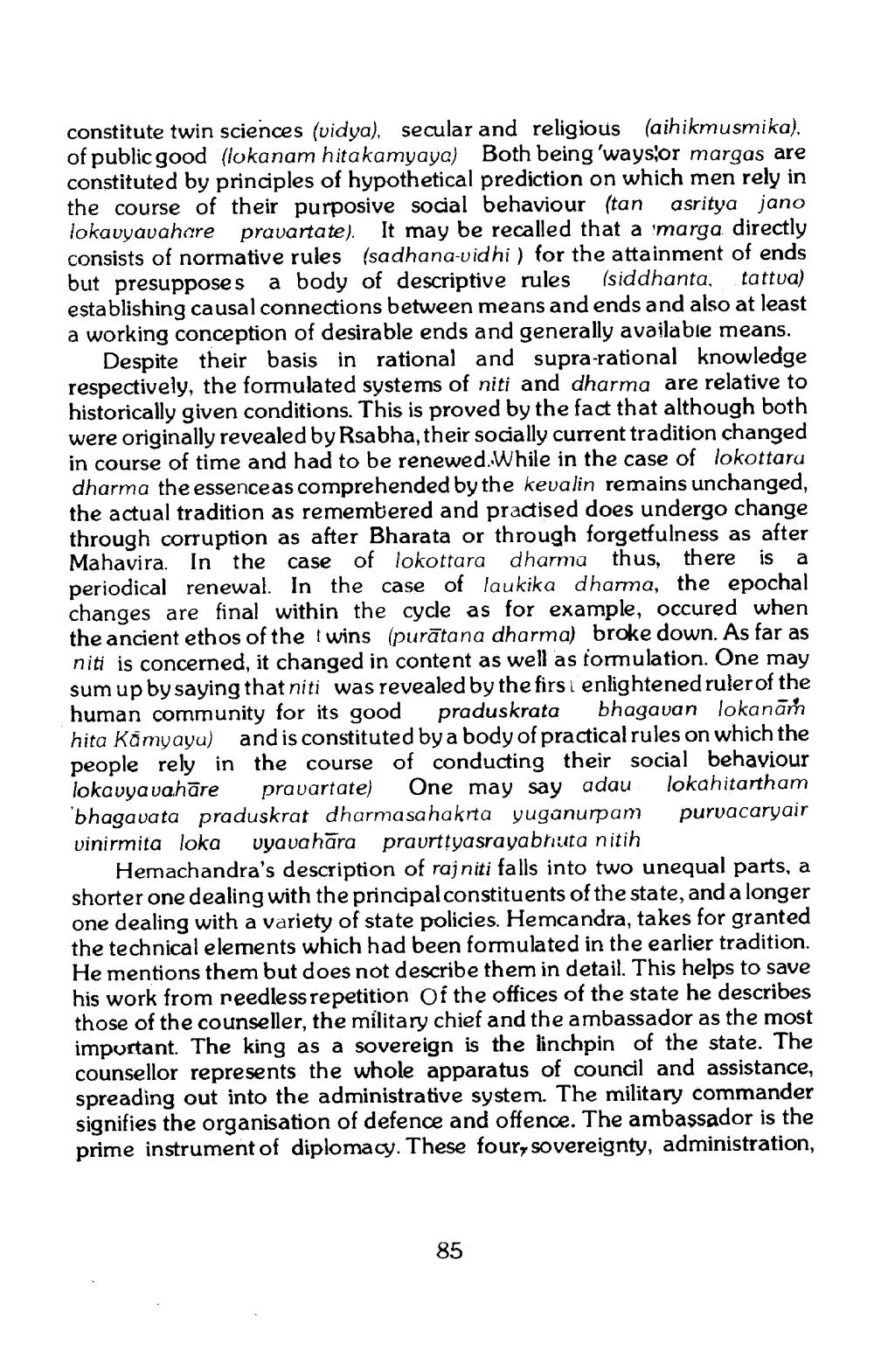________________
constitute twin sciences (vidya), secular and religious (aihikmusmika). of public good (lokanam hitakamyaya) Both being 'ways'or margas are constituted by principles of hypothetical prediction on which men rely in the course of their purposive social behaviour (tan asritya jano lokavyavahare pravartate). It may be recalled that a marga directly consists of normative rules (sadhana-vidhi) for the attainment of ends but presupposes a body of descriptive rules (siddhanta, tattva) establishing causal connections between means and ends and also at least a working conception of desirable ends and generally available means.
Despite their basis in rational and supra-rational knowledge respectively, the formulated systems of niti and dharma are relative to historically given conditions. This is proved by the fact that although both were originally revealed by Rsabha, their socially current tradition changed in course of time and had to be renewed.While in the case of lokottara dharma the essence as comprehended by the kevalin remains unchanged, the actual tradition as remembered and practised does undergo change through corruption as after Bharata or through forgetfulness as after Mahavira. In the case of lokottara dharma thus, there is a periodical renewal. In the case of laukika dharma, the epochal changes are final within the cycle as for example, occured when the ancient ethos of the twins (puratana dharma) broke down. As far as niti is concerned, it changed in content as well as formulation. One may sum up by saying that niti was revealed by the first enlightened ruler of the human community for its good praduskrata bhagavan lokanām hita Kamyaya) and is constituted by a body of practical rules on which the people rely in the course of conducting their social behaviour lokavyavahāre pravartate) One may say adau lokahitartham 'bhagavata praduskrat dharma sahakrta yuganurpam purvacaryair vinirmita loka vyavahāra praurttyasrayabhuta nitih
Hemachandra's description of rajniti falls into two unequal parts, a shorter one dealing with the principal constituents of the state, and a longer one dealing with a variety of state policies. Hemcandra, takes for granted the technical elements which had been formulated in the earlier tradition. He mentions them but does not describe them in detail. This helps to save his work from reedless repetition Of the offices of the state he describes those of the counseller, the military chief and the ambassador as the most important. The king as a sovereign is the linchpin of the state. The counsellor represents the whole apparatus of council and assistance, spreading out into the administrative system. The military commander signifies the organisation of defence and offence. The ambassador is the prime instrument of diplomacy. These four, sovereignty, administration,
85




